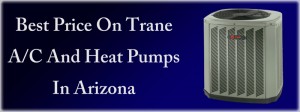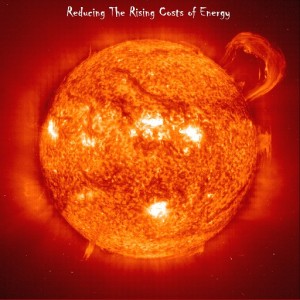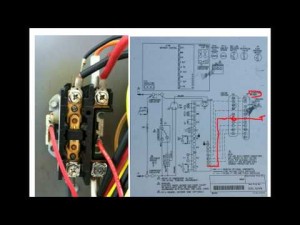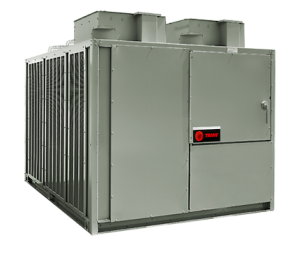 Zoned Air Conditioning Systems – Modern Style
Zoned Air Conditioning Systems – Modern Style
Remember the zoned air conditioning system used by your parents? Dad’s simple cost-savings plan involved closing off registers in specific rooms of the house. Sadly to say: Dad’s plan proved totally ineffective. And in many cases, such haphazard AC zoning practices actually shortened the life of the HVAC air handler unit.
Yet the ways of old still linger: The average homeowner continues to use closed registers as a primary means of zoned AC comfort.
In this article, the home comfort techs at American Cooling and Heating reveal the pros and cons of an installed Arizona home zoning AC system.
Multi-Zone Heating and Cooling: Sharing Your Phoenix Home
Efficient and effective home comfort requires installation of a balance AC airflow system. If you live alone, zoning your home air conditioning may seem senseless. But for people with a family, daily thermostat wars can become a major problem. Some folks like a very cold home environment. Other folks prefer things a bit warmer. With standard installed Phoenix HVAC systems, family compromise is the only solution.
Multi-zone home cooling and heating offers a different type of air conditioning solution. These systems are designed to make home zoning AC quick, efficient and effective. However, multi-zone home air conditioning systems come with both advantages and disadvantages – Installation prices coming in as one of the major points of consideration.
Zoned Air Conditioning – A Simple Definition
Installed multi-zone home heating and cooling enables individual temperature control of specific divisions within your home. Certified HVAC techs examine your home, calculate best processes, and then essentially split your house into several distinctively controlled heating and cooling AC zones. In some homes, the process may be managed by installation of multiple furnaces, heat pumps or air conditioning systems. In other homes, the process may be managed by installation of electronic baffles geared to open and close on key to air flow from a central air handler. Either method enables the HVAC system to provide separate and independent temperature adjustments to each zone within the home.
Zoned AC – Pros
Benefits of a effective Phoenix home AC zoning include:
Home Zoning AC Comfort – Unlike central heating and cooling systems, multi-zone home air conditioning enables family members with personal control of temperatures zone by zone. Depending on the divisions, everyone sets sleeping temperatures to their favored positions. Likewise, kitchens can be kept cooler than living rooms. Basically, a zoned air conditioning system lets your family enjoy home comfort that suits individual heating and cooling preferences.
 Home Zoning AC Control – Although effective and efficient home zoning air conditioning links back to comfort, the systems offer more than mere temperature-orientated physical comfort. Modern HVAC technology enables remote and programmed control over thermostats located throughout the home. Top zoned AC systems also include fan controls, humidity management, and various energy saving options. For example: the Trane ComfortLink II Thermostat System helps homeowners reduce energy expenses – even if you are not zoning. A properly sized and correctly installed home zoning HVAC system can save your family hundreds of dollars per year in energy expenses.
Home Zoning AC Control – Although effective and efficient home zoning air conditioning links back to comfort, the systems offer more than mere temperature-orientated physical comfort. Modern HVAC technology enables remote and programmed control over thermostats located throughout the home. Top zoned AC systems also include fan controls, humidity management, and various energy saving options. For example: the Trane ComfortLink II Thermostat System helps homeowners reduce energy expenses – even if you are not zoning. A properly sized and correctly installed home zoning HVAC system can save your family hundreds of dollars per year in energy expenses.
Home Zoning AC Noise Management – Although modern heating and cooling equipment produces much less noise emission than the early years counterparts, integrated variable-speed fan systems provide an even greater form of noise management. Likewise with two-stage air conditioning systems: Home zoning permits maximum system-performance system-efficiency while providing quieter system operations.
Phoenix Zoned Air Conditioning Systems – The Bad News
As with all things complex, installed multi-zoning is not necessarily suitable for every home situation. AC zoning introduces two basic complications:
- Higher costs for parts and installation
- More complexity in configuration.
Home Zoning AC Systems – Increased Costs For Installation
Multi-zone heating and cooling systems cost more than standard AC systems. A correct and energy-efficient HVAC zoning system requires more equipment and a more complex duct system. Even if you convert your existing central unit, you will pay a higher cost for the changeover.
Home Zoning AC Systems – Complexity
More equipment means greater chances for future component failure. This also means that servicing and troubleshooting expenses run higher. Before switching over to a multi-zoned heating and cooling system, contact ACH for a full home evaluation. Our techs can provide you with a best-purpose Phoenix heating and cooling solution for your home.
Act now. Contact American Cooling and Heating – Arizona air conditioning sales and service, reaching out to residents throughout the Phoenix metro area.
 Trane Low Profile Air Conditioning In The News: Trane XR16 May 2017 News Brief
Trane Low Profile Air Conditioning In The News: Trane XR16 May 2017 News Brief Zoned Air Conditioning Systems – Modern Style
Zoned Air Conditioning Systems – Modern Style Home Zoning AC Control – Although effective and efficient home zoning air conditioning links back to comfort, the systems offer more than mere temperature-orientated physical comfort. Modern HVAC technology enables remote and programmed control over thermostats located throughout the home. Top zoned AC systems also include fan controls, humidity management, and various energy saving options. For example: the
Home Zoning AC Control – Although effective and efficient home zoning air conditioning links back to comfort, the systems offer more than mere temperature-orientated physical comfort. Modern HVAC technology enables remote and programmed control over thermostats located throughout the home. Top zoned AC systems also include fan controls, humidity management, and various energy saving options. For example: the  Maintaining A Comfortable Home Against High Temperature Arizona Summers
Maintaining A Comfortable Home Against High Temperature Arizona Summers Stopping solar heat-gain involves external solutions. The second line of defense involves controlling heat gain from within the home. This means reducing indoor heat as well as keeping heat out.
Stopping solar heat-gain involves external solutions. The second line of defense involves controlling heat gain from within the home. This means reducing indoor heat as well as keeping heat out. d-air systems are the most common method of controlled home cooling. However, many components define the effectiveness of the installed A/C unit. Product selection based upon SEER ratings may seem simple and straightforward, yet the path to energy-efficient home comfort is often clouded by an assortment of additional calculations and considerations.
d-air systems are the most common method of controlled home cooling. However, many components define the effectiveness of the installed A/C unit. Product selection based upon SEER ratings may seem simple and straightforward, yet the path to energy-efficient home comfort is often clouded by an assortment of additional calculations and considerations.


